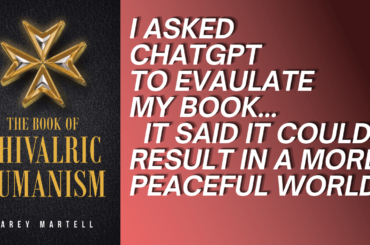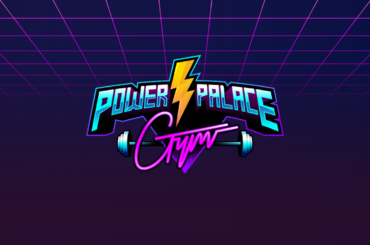In the past I have written about how many authors are getting bad information on how to promote a self-published book.
One of my core strengths as an entrepreneur is my marketing ability. It’s taken a lot of time, but by suffering through a lot of mistakes I’ve managed to find a process that works for me. I had built the Power Up TV network using certain techniques, and I’ve also applied these techniques to the books I have written, especially those I wrote during my time between leaving Thunder Studios and developing Zenither.
Now while the majority of my books are about business and marketing, I also have other interests I enjoy writing about. The martial arts happens to be something I’ve had a life-long interest in and I started learning about historical European martial arts (HEMA) a few years ago. I saw an opportunity to translate some of this knowledge into a book about lightsaber combat — a subject I noticed there is very little information on. Ever since the new Star Wars films were announced a few years ago, there has been news coverage about yoga studios and karate dojos introducing lightsaber sparring as part of their curriculum. I figured that many people who might like to attend one of these classes won’t live near a school and this would create a need in the market for a book that would allow self-study.
It turns out my assumption was correct, which is why ‘Stunt Lightsaber Combat for Beginners‘ became a best-selling book on Amazon and hit the #1 spot for several martial art and sport related categories.
In this article I want to show step by step what I did to get my book to the top of a best-seller list and generate tons of sales. I’m doing this because I really want other people to be successful with their own endeavors, even though showing this method may result in other people trying to use the same tactics to compete with my own books.
That’s fine — competition is healthy. It’ll just force me to produce even better products and help build out the market for those products.
The Product:
Books are products. Yes, a book is a creative outlet and I truly believe contains the heart of the writer, but this is true for any crafted good. Just because writers are artisans doesn’t mean the books we create are not products. Anything you want someone to buy *is* a product.
While it is possible to generate initial sales with an inferior product if your packaging is good ( in this case, fancy cover and the blurb) , it won’t help you build a valuable brand if the product sucks.
I spent three months writing the book and commissioned line art drawings to illustrate the techniques and drills. I invested into producing this book because I genuinely think “lightsaber combat” could become a genuine sport and want to assist with making that happen.
I chose to include lineart illustrations in the book over photos for several reasons.
- Good martial art instruction photos are difficult to create. As the book pages will be black and white, things like black clothing and shadows often make it difficult for readers to interpret the moves. You also need a suitable background location to take the photos that will look professional. I’ve read many martial art books and always disliked when they are very clearly taken in someone’s backyard and not framed properly.
- A good photographer costs money. While I am a photographer and have a lighting kit, I can’t take good photos of myself. It also takes a lot of time to prep the models for lighting a photo as you try to eliminate shadows and things.
The reality is, I didn’t know for absolute certain that anyone would buy the book. Sure, I did market research — I saw that Ultrasabers, the market leader in the saber manufacturing industry had over 500,000 followers on Facebook and tons of engagement on every post they release. I noticed there was a lightsaber club in almost every major city in the USA. I also read all the articles about lightsaber fitness classes in the media.
Still, nobody had ever released an info product like this, which offered instruction in how to duel with a lightsaber. I had a reasonable understanding of the market and how to reach the potential customers, but until I published the book I wouldn’t know what the sales would be like.
As a lean startup guy I subscribe to the philosophy that you should keep your initial investment into the product low until you understand the revenue opportunity. This meant to me that it would be unwise to invest into high quality photos for the book, as I’d have no idea if I’d recoup the upfront investment. Certainly this book was written out of a passion for swordsmanship and lightsabers, but I’m also in the midst of building a publishing imprint as part of a plan to bring in passive income for myself. I want to make the money back and use this book to fund the creation of more books like it.
By selecting lineart for the final product, I can have photos taken on a cellphone in a backyard by an unskilled person without using any lighting equipment, and with the models in the photos wearing normal clothing. I can then give these photos to the artist to use as models for the drawings and instruct the artist to add Jedi-like robes to the illustrations to add atmosphere. With crisp black and white drawings there are no distractions for the reader either, so they can study the images to get a clear understanding of the positioning in each drill.
The next question you might wonder is how did I find an illustrator to work within my budget? I sourced the illustrations through a freelancer website. The artist was based in a foreign country where the value of the American dollar greatly exceeds the local currency, so I paid the author a rate that was according to their local market and not here in the States. It could have cost me thousands of dollars to produce the illustrations, but instead it only cost a couple hundred dollars. Some people might dislike that I outsourced the illustrations to an artist who works in another country, but the way I look at it, I have helped enable a skilled artist living in a tough economy to support themselves and family while also helping myself create a passive income so I can focus on writing more books. We live in a global economy and I have no obligation to self-sacrifice myself to pay higher prices to a local artist. Furthermore no local artist was denied work, because I simply would not have produced this book at all if I couldn’t get the illustrations done for a few hundred dollars — which a local artist of similar skill would never agree to do because their economics are different than someone in a foreign country.
Anyway, after the writing and illustrations were done I created the layout myself in Microsoft Word. I chose to not use Adobe InDesign for the layout because there wasn’t really anything the book needed that couldn’t be done in Word (I used InDesign for ‘The Lean Channel: YouTube for Entrepreneurs” because I modeled its layout on a stereotypical college textbook).
I also created the book cover myself using Adobe Photoshop and a book layout template library I own. This is the same way I create all my book covers.
Pricing:
The topic of the book is very niche; it’s an exotic martial art category. Generally books of martial art instruction have a higher price point because the audience is willing to pay extra to receive the instruction which often cannot be obtained elsewhere. I felt that was the case with this book, as there are no other books on the topic of lightsaber fencing.
Considering this I priced the Kindle version at $9.99 and the paperback at $19.99 which is similar to the pricing of other martial art instruction books.
The Sales Landing Page:
One of my core proficiency is designing digital sales funnels and I treated the website for the book no differently.
First I searched for a suitable domain name. I noticed that www.lightsaberbook.com was available so I snatched it up for $9.99 at GoDaddy.
Next, I created a list of all the reasons why someone would want to purchase my book and created a short customer profile of the individual. I then wrote sales copy for the website that would appeal to this person — namely some Star Wars references and stressing that even a beginner could learn using my book. I included some of the illustrations from the book. I knew I would also want to add a mailing list signup form so people could get more information about future books, and I also offered a sample of the book for download in exchange for someone signing up to the list.
I considered using one of my WordPress themes, but none of them gave me the sales funnel layout that I wanted. I had an existing Strikingly account which makes sales landing pages easy so I selected this host for the website.
I should point out that the initial design of the sales landing page has been constantly improved over the weeks since I first launched the page. Before I went crazy with promotion, I did a paid Facebook ad and looked at the conversions, and made changes to the text in the purchase buttons after I did not getting the visit to sales conversion ratio that I wanted. I also periodically added new images, such as photos of the printed book and a screenshot of the book sitting in the #1 Amazon best-seller spot. When the book received its first review, I added a screenshot of that review to the sales page.
Another very important thing I did: The “Buy Now” buttons to the Amazon product page are not just a link to the book. I used my Amazon Associates account to generate an affiliate link and used this for the buy buttons. This means I made extra money if people clicked the book link, as even if they didn’t buy my book, so long as they bought something else on Amazon I would generate some revenue.
Facebook Page:
I created the Facebook Page “Lightsaber Combat” and built its audience up using organic (free) methods such as those described in my book Facebook Marketing: Guide to Strategies That Don’t Suck, along with two ads that were very laser-focused on a specific demographic — people who liked Star Wars based in the United States and Canada who were between the ages of 18 and 36, spoke English AND exhibited the behavior of purchasing Kindle books. These two ads cost me a total of $60.
I’m not really trying to promote my Facebook marketing book to you, but it’s a pretty involved method to build a Facebook Page from scratch which is why I wrote a book about it. You should purchase the book for $0.99 if you really want to know what organic techniques I use.
Anyway, within the first 24 hours I gained over 600 ‘likes’ to the Page itself and 38,000+ impressions to the announcement of the book. I took this as validation the market wanted a book on lightsaber combat.
Influencer Outreach
I did send out a lot of press releases. I mailed every identifiable Star Wars related podcast, fan site and lightsaber club. This resulted in some articles on sites such as Yodanews.com and Jedinews.com which did generate traffic to the sales page.
The major news outlets did not cover the book upon launch. This was disappointing, but not entirely unexpected. The most press the book received was an article by Sherry Tucci for The Daily Dot. She called me on the phone and I did an interview for the article. I’m pretty thankful for this article because while I am unsure on how it impacted sales, I appreciated the interest enough that I ended up having a second book created.
I also offered review copies of the book to several individuals I identified might be social media influencers. Some of them accepted, and I sent them review copies. I have yet to see them produce the reviews and they may still produce reviews (given my prior experience with influencers, I realize it often takes time for them to produce the promotion) but as of now no social media influencers have contributed to the popularity of the book.
SEO
The press releases to blogs were not only to get news coverage, but also to secure the necessary back-links for getting the sales landing page to appear at the top of search results for search queries related to lightsabers.
I also manually posted the link into the comments of news articles related to lightsaber fitness classes. I also started several threads in Star Wars fan forums, posted to reddit, added the site to stumbleupon, etc. While the direct intent of making these posts was to engage with people who might be interested in the book the side-benefit is that it would create more back-links to the website from domains that were also related to Star Wars search queries.
Another thing I did was add a Facebook post feed to the sales landing page so that every time a post was added to the Facebook Page, it would update the content on the sales landing page. This small feature would help with the “freshness” rating portion of Google’s ranking algorithm without needing to operate a blog on it.
Twitter:
I setup a Twitter account for the book at https://twitter.com/lightsaberbook . I then used the software TweetNuke to build awareness much cheaper than using paid “Promoted Tweets”. I used TweetNuke to scrape a userlist from various lightsaber manufacturers such as Ultrasabers and Saberforge and having the account follow each user on a drip-release schedule.
Why would I do this? Simple understanding of Twitter user behavior.
Most Twitter users do not often get someone following their account, and when they do they have a tendency to look at the profile of the people who have followed their account. This allows an opportunity for the book to be discovered by the target audience; it doesn’t matter if anyone subscribes to the Twitter account. The whole point is for the potential customer to discover the book.
Partnership with Ultrasabers:
Prior to launching the book on Amazon I sent an email to Ultrasabers to inquire their interest in partnering with me to distribute the book to their customers. I did this way back in November, actually, before the illustrations for the book were complete. The basic idea was I would recommend their saber product in the book in exchange for Ultrasabers promoting the book on their website.
Why did I start the conversation so early? Because I knew from my prior experiences as an entrepreneur that forming a strategic partnership is a 3 to 8 month process. I am of course excited and passionate about my book as any author is, but I know other companies have their own priorities and forming strategic alliances normally rank as a lower priority to everyday operational needs like servicing their customers, dealing with manufacturers and things of that sort. Given this consideration I knew it was important to begin the conversation before the product was even ready for market so that when it was available, distribution could occur relatively soon. And it did.
Ultrasabers promoted the book on their Facebook Page on Jan. 18th, only three weeks after the book was published. As the audience was highly targeted and large, the book went viral. The book had made sales prior to this promotion, but sales exploded afterwards.

There was a lot of comments on Ultrasaber’s post. Now, there are some “book experts” who claim the author should never interact with people who are talking about their book and to do so will always result in the author losing sales.
I did the opposite of this advice, and engaged with the people who left comments on the post. The reality of entrepreneurship is many people were asking questions and there was no one else who would be able to answer. Engaging with the audience is critical and I believe this led to more sales of the book.



I also learned this important truth from my years of building a YouTube channel; If you don’t engage with people you won’t have opportunities to connect with them, which is important for building a long lasting sales funnel for your product. For example,

While this exchange initially started negative, with Joe not thinking well of the book, by interacting with him I was able to better explain the book’s contents and present an opportunity for him to hear about the next book that he might be more interested in. Had I taken the advice of so many other so-called “experts” in the book industry and not engaged, this would not be possible.
In terms of what this Facebook engagement did for traffic to the sales page, during this period it looked like this,


This traffic brought a massive sales spike. On Amazon the book reached the top of the best-seller list for martial art books.

Now I realize some authors out there are going to say something like, “Okay, great. You formed an alliance with a product manufacturer related to your non-fiction book. This isn’t applicable to my novel, as it is a work of fiction“.
To this I say: You are wrong.
Every day big companies form strategic alliances with other big companies to market fictional stories to consumers. You’ve probably heard of Happy Meals; why do you think those toys are always based on upcoming movies and TV shows into children’s hands? If you guessed “strategic alliances”, you are correct!
Sure, you as an indie author with a limited budget are not going to be able to get a toy line based on your novel into a Happy Meal promotion. You CAN form a similar kind of promotion with a smaller organization or company whose customers are similar to your desired readers, if you are able to likewise promote that company inside your book.
I’m not going to give you specific cases you can follow. This is going to depend very much on the specifics of your book and your own ability to negotiate a partnership. If you are creative enough to write a novel, you should have the imagination necessary to find a solution to your distribution problem.
Besides, forming a strategic partnership if a basic requirement of any startup business or new product line for an existing business– which the publishing of a new book qualifies as. If you self-publish you are going the route of an entrepreneur. As a business owner you should adopt the same principles that any other business owner needs in order to be successful.
I firmly believe that self-published authors need to treat their publishing as a business, and I am stressing this so hard because I have met a lot of self-publishing authors who have the self-defeating attitude that “the book business is different than any other business, so conventional business strategies don’t work“. I am here to tell you that it is not, and the only people who wants you to believe the book business is beyond you are publishers, agents and other service providers that want to take advantage of you. Without authors to submit manuscripts to them rather than self-publishing, these people have no business model which is why they focus so hard on convincing authors they can’t do it alone.
What does this traffic mean for sales?
You are probably wondering how much money I have made from the book. I’m a little reluctant to share actual sales data about my book, for multiple reasons. I will say that during this first month I have more than made back the costs of production ,and there has been enough sales this first month that I will be able to commission illustrations for three or four more books in this product line of “lightsaber combat”.
The book has a Kindle sales ranking in the #6,000 range and I believe it will continue to remain in this general area as it continues to sell every day. That said, I have sold a lot more paperback copies than I have sold Kindle copies which shows the importance of having a paperback version of your Kindle book available.

To date the book has generated somewhere between $600 to $800 a month in sales. It was successful enough that I produced a second book, Stunt Lightsaber Combat for Intermediates: Advanced Drills and Techniques which sells for $24.99 as a paperback. I priced the second book higher than the first because my belief is that only a smaller number of people will want to purchase the follow up book — those who really enjoyed the first one enough to want a second book of techniques and drills — so the price needs to be higher to make back the expense of creating the book illustrations and marketing.
Conclusion
I don’t think there is anything particular unique in selling books compared to other kinds of products. I think many authors do themselves a disservice by putting the publishing industry on a pedestal and believing that it is some kind of special horse whose industry is so unique that the ways of selling products in other categories do not apply. Publishing may be a niche and the ease at which video entertainment and instructional material is accessed has impacted its sales but that doesn’t mean it’s not possible to produce books and sell them in this day and age. It is, you just need to produce something that has a large amount of appeal to many people and utilize effective sales techniques.
I hope this article is helpful to others looking to self-publish their own books.





